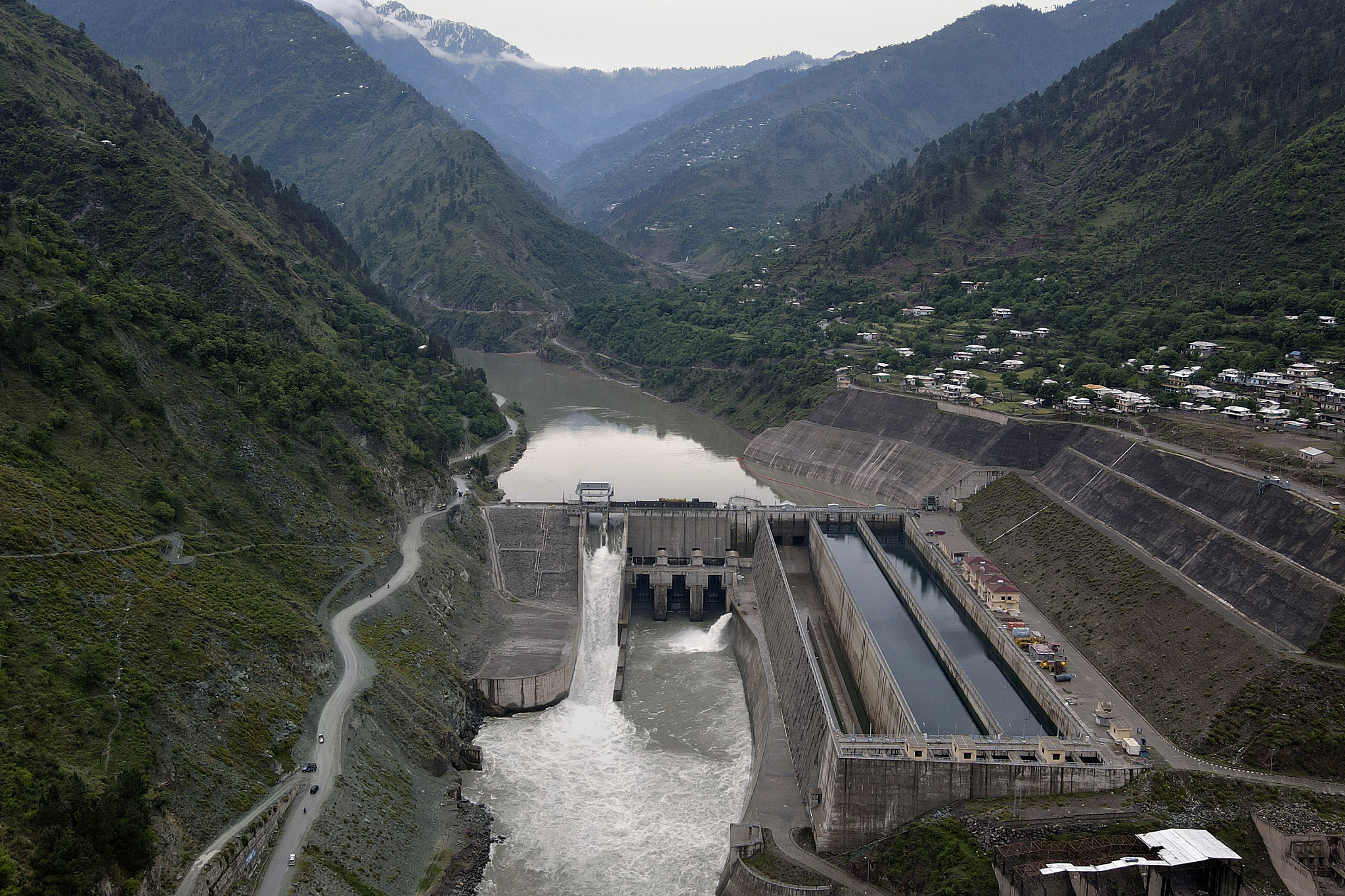Water Technology Helps Build a Sustainable Future

The main dam of the China-built Neelum-Jhelum Hydropower Project in Nauseri, Pakistan. (PHOTO: VCG)
Edited by TANG Zhexiao
On November 15, the first phase of the East Route of China's South-to-North Water Diversion (SNWD) project officially celebrated its tenth anniversary.
Transferring over 60 billion cubic meters of water since November 2013 from major rivers in the south to the drought-prone north including metros like Beijing and Tianjing, the project have directly benefited more than 150 million people.
From the world’s longest artificial river Jinghang Grand Canal, to the Three Gorges Dam and the SNWD project, China’s mega water conservancy projects are famous worldwide.
Besides domestic projects, China is stepping up efforts in assisting global water infrastructure projects, developing the water resource and imporving people's lives.
Water projects imporving the quality of life
The Karot Hydropower Project is one of the China-aided power projects being built in Pakistan under the framework of the China-Pakistan Economic Corridor.
Besides alleviating energy shortage and optimizing Pakistan's energy structure, the project has benefited Pakistan people in both economic and social ways since it broke grounds in April 2015.
Official data shows that it can generate 3.2 billion kilowatt-hours(put in gigawatt) of clean electricity annually , reducing 3.5 million tons of carbon dioxide emissions per year. ?
Meanwhile in Africa, for many years, residents of Cabinda Province in Angola suffered from water shortage due to a lack of infrastructure, with most of them relying on local water delivery trucks for daily needs.
In June 2022, a water supply project built by China Railway Construction Co., (CRCC) (International) Ltd. was completed in Cabinda, Angola.
With a daily water supply capacity of 50,000 cubic meters, which can ensure the supply of tap water 24/7, the water shortage problem of 92 percent of the populated area in Cabinda and 600,000 residents was solved, said Li Chongyang, general manager of CRCC (International) Ltd. It is the first time for many villagers to directly access tap water.
Tech benefiting the world
As the largest stadium in Qatar and the Middle East in terms of capacity, the Lusail Stadium hosted ten matches of the FIFA World Cup Qatar 2022 including the final.
When Lionel Messi and his team won the tournament for Argentina, few fans would have known that the turf was planted by CRCC using the underground infiltration irrigation technology.
The turf is a crucial part of a football pitch and can affect a match's outcome. The technology, developed by College of Resources and Environment of Ningxia University, can irrigate with sea water or recycled water directly onto the grass, stabilizing water control and making it appropriate for tropical and subtropical zones like Qatar.
This technology is what northwest China's Ningxia Hui autonomous region,which is surrounded by sand on three sides and has an arid climate, contributes to Arab countries with similar natural environments while improving water resource utilization.
Developed by Changjiang Design Group (CDG) and applied in more than 30 water infrastructure projects, the video and sonar integrated leakage detection technology is a “magic tool.”
With the help of this technology, the location of abnormal leakage areas can be determined quickly. Moreover, the penetration point can be accurately located through the underwater robot high-definition tracking. The flow rate and detection accuracy are 100 times higher than the previous technology version, with the detection water depth exceeding 150 meters, according to CDG.
Fu Ni, deputy director of the international department of CDG, said these technical achievements of international cooperation in water conservancy are expected to promote exchanges and cooperation in water-related fields and the company will continue to promote Chinese technology globally.






